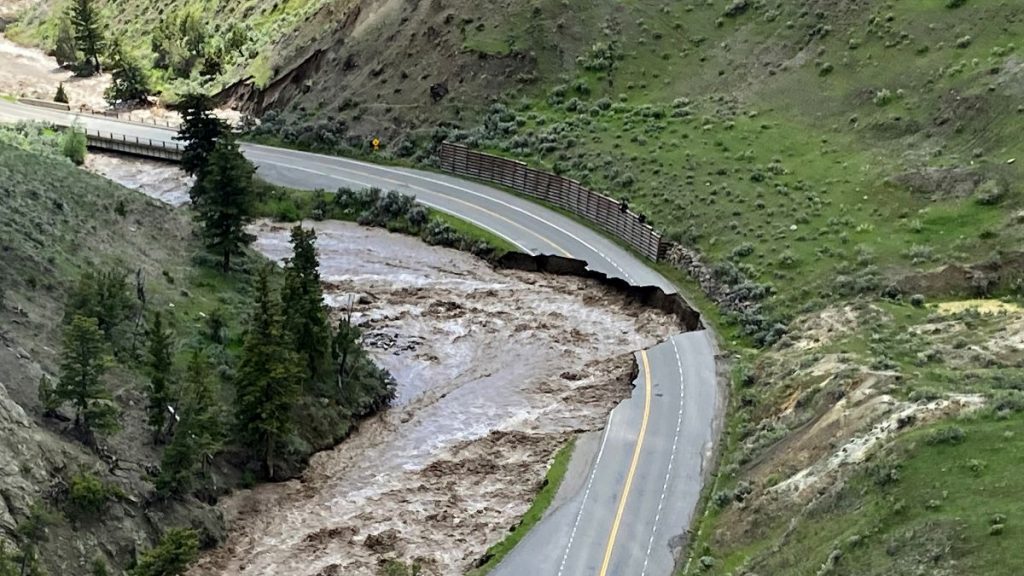Mother Nature can be beautiful. But she can also be cruel; a wicked and fickle task master who every-so-often reminds us of who is really in charge.
The Yellowstone National Park Flood of last year, is a sharp reminder of how quickly Mother Nature can use her fury and take the things that are majestic and glorious, turning them into powerful, destructive forces, that alter landscapes, change the course of rivers and take man-made structures like bridges and roads and wipe them out within minutes.
On the morning of June 13, 2022, Yellowstone National Park experienced a number of coincidental factors that came together, just at the right time, for the, wait for it, “perfect storm,” that would shut down the entire park for over a week.
Background — How Did The Flood Happen?
Dense snowpack, which hadn’t melted yet at higher elevations, and temperatures spiking for the time of year, combined with copious amounts of spring rain, created a weather event that caused a massive amount of water to run into the Yellowstone and Lamar rivers. The result was a whole bridge being swept away, earth and roads disintegrated, carried away by the swift-moving current, entire entrances washed out and inaccessible, and rivers change its courses. One house was completely taken off its foundation and crumpled like a cardboard doll house before being destroyed as it was swept down the river near Gardiner, Montana.
On that morning of last year, “Yellowstone experienced a 500-year flood event. Northern parts of the park received a combined 7.5-9.5 inches of rain and snowmelt in a 24-hour period. The flood destroyed several sections of the North Entrance Road between Mammoth Hot Springs, Wyoming, and Gardiner, Montana, and three sections of the Northeast Entrance Road between Lamar Valley and Cooke City/Silver Gate, Montana,” according to the Park’s website.
Park Superintendent, Cam Sholly along with his rangers and staff, took immediate action that included a range of life and safety objectives, ensuring all employees and visitors were safe and accounted for. His quick actions, it could be said, saved lives in the Park. The next step was to restore power, divert damaged wastewater systems, and help local communities around the Park, especially the northern and northeast sections, with emergency response.
Because of the quick and timely response of local and national agencies like the National Park System, WYDOT, MDT, and others, the south loop of the park reopened on June 22, 2022, nine days after the flood. As repairs continued, additional sections of road and backcountry trails opened throughout the summer.
Recovery Timeline
- 6/14, Conducted initial damage assessments by resident Federal Highway Administration (FHWA) engineers.
- 6/14, Provided $10 million in Emergency Relief Federally Owned Roads – Quick Release (ERFO-QR) funding.
- 6/15, Started to improve Temporary North Entrance Road (Old Gardiner Road) with National Park Service (NPS) roads crews.
- 6/17, Provided additional $50 million in ERFO-QR funding.
- 6/17, Started planning and design for long-term reconstruction strategy.
- 6/21, Started temporary solution assessments to repair Northeast Entrance Road to Cooke City, Montana.
- 6/29, Hosted senior officials from congressional committees, NPS, and FHWA visit to develop strategies around short- and long-term recovery efforts.
- 7/1, Finished NPS improvements to Temporary North Entrance Road allowing for one-way employee traffic.
- 7/5, Started work on Temporary North Entrance Road after Diverting HK Contractors, INC from Old-Faithful-to-West-Thumb project.
- 7/11, Finalized temporary Temporary North Entrance Road designs and awarded contract to HK Contractors, INC.
- 7/26, Finalized temporary Northeast Entrance Road designs and awarded contract to Oftedal Construction, INC.
- 8/8, Started work on Northeast Entrance Road repairs by Oftedal Construction, INC.
- 10/15, Opened Northeast Entrance Road to the public.
- 10/30, Opened Temporary North Entrance Road to the public.
But roadways and trails, (the arteries of Yellowstone) were only a part of the recovery process. There was more to be done.
Mammoth Wastewater System
A sewer line, running alongside the road, carrying wastewater from Mammoth Hot Springs to a sewage treatment plant in Gardiner, had ruptured. Staff acted quickly, rerouting the wastewater into percolator ponds used between the 1930s and 1960s. By doing this, it allowed summer day-use visitors and residents to stay in the area.
As water levels rose to what were record-breaking levels, Superintendent Sholly, shut down the world-famous tourist destination in an abundance of caution. Not being deterred, he rallied national and state agencies after the water receded and after 10 days, 90 percent of the park had re-opened.
A miraculous triumph of Humanity vs. Mother Nature.
Yellowstone National Park — A Year Later
But the Superintendent says that a year later, things have almost gotten back to normal. The good news is visitation to America’s first National Park has rebounded.
“Our inbound vehicle numbers are higher than in 2019, pre-COVID,” Sholly tells Cowboy State Daily.










